Planting / 2013-2014 / Bloody Butcher Corn
Last year, one of the crops I grew was Bloody Butcher corn. The seed was bought from Koanga. I started it out in trays on the front porch under frost cloth, and eventually planted it out. And finally, I harvested the remaining cobs for seed, which has since dried and been stored away. A few of these earlier pictures may have already been posted, but not the rest.
This was late October 2013, or Spring here. You can see the three sisters bed, with the corn mounds, and the planted out seedlings on each. It looks nice and lush.
A close up of the same bed on the same day, showing the planted out seedlings. Note that I don't know math good, so grew too few seedlings. One of my many mistakes.
Mid to late December 2013. The seedlings have grown. Also the hills without seedlings either had seeds direct sown, and where they didn't germinate, new seedlings grown and transplanted. A variety of "squash" or pumpkin as they are known here, the second of the three sisters, are interplanted. Most of these were germinated in trays and transplanted. Direct sowing didn't work out well in general. The third sister, beans, is in there in some cases, on the corn hills. But again miscounting of numbers required affected them.
Early January 2014. More seedling growth, both of the pumpkin and corn. The shade of the corn seen here, is indicative of the problem with three sisters in a non-desert environment. I simply don't get the heat and sunlight to make the shade beneficial. In a desert environment, the shade would prevent water evaporation. In a summer with lots of mist, fog and plenty of rain.. it meant sodden ground and insufficient sunlight to underlying plants instead. Lesson learned.
February 2014. What a difference 20 days makes. The front right corn shows what happens after strong winds knock down stalks. They pull themselves back up.
March 2014. The corn has passed the sweetcorn stage, but is not showing any signs of drying off. Too many mild days. One of the more developed cobs has been peeled back to encourage it to dry. When dried, the bloody butcher kernels are a deep red colour.
Early April 2014. All the remaining cobs have been peeled back. At this stage it was evident that birds wouldn't touch the existing peeled back cob, so it was safe to do it to the rest. As long as the cobs are past a certain stage, the frosts will not do any real harm. This I learned from some internet research.
Late April 2014. Here you can see that several frosts have happened, killing off the stalks. The cobs are pretty dry, but none are fully dry. All are soft to some lesser degree at this point. Perhaps one has a floury texture to the matter inside it's kernels.
The lesson learned from all my corn growing, is that three sisters does not make sense here. Also, do not plant different varieties of corn side by side, unless you want cross-pollination. Many of my Bloody Butcher cobs sported kernels which had traits of kernels on the Blue Aztec and Black Navajo varieties grown alongside them.


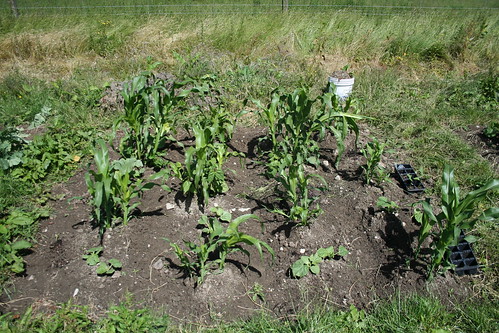
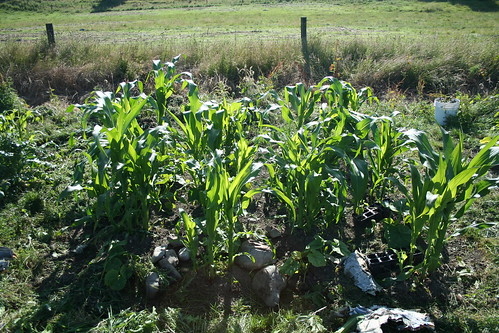
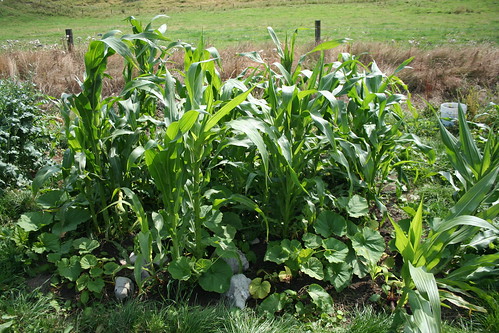
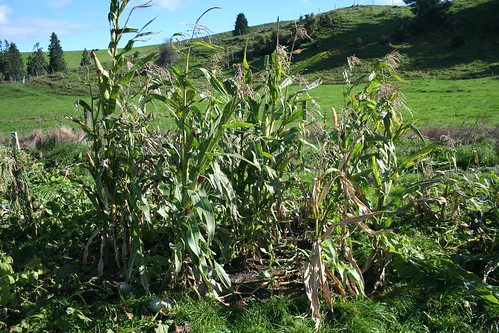
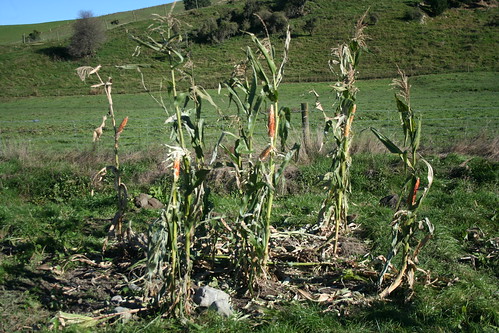
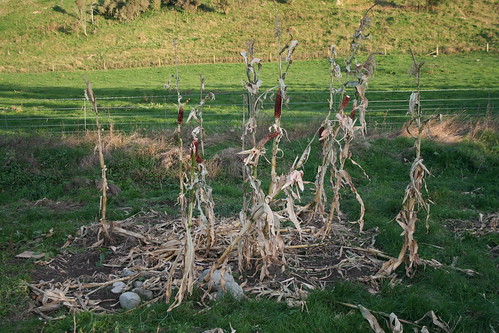
No comments:
Post a Comment